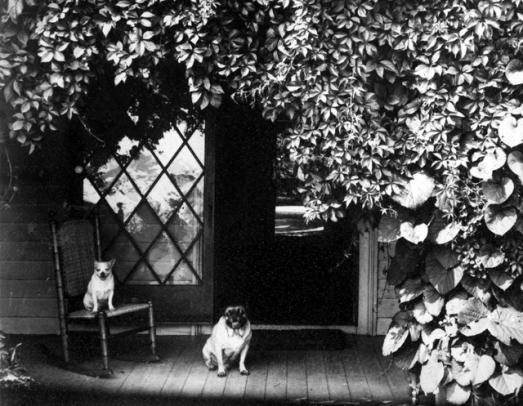 Chico and Punch, the two pampered pooches of photographer Alice Austen, on the porch of Clear Comfort, the 17th-century farmhouse on Staten Island where Alice spent most of her life. Chico and Punch lived with Alice for about 15 years, during which time she took many photos of them. Alice took this photograph in 1893.
Chico and Punch, the two pampered pooches of photographer Alice Austen, on the porch of Clear Comfort, the 17th-century farmhouse on Staten Island where Alice spent most of her life. Chico and Punch lived with Alice for about 15 years, during which time she took many photos of them. Alice took this photograph in 1893.
In Part I of this Old New York dog tale, we met Alice Austen, an American photographer who grew up in the Austen family’s 17th-century farmhouse in Rosebank, Staten Island. Part I left off on June 24, 1950, the day Alice, once of prominent woman of New York’s high society, took an oath declaring herself a pauper.
In Part II, we’ll visit the Staten Island poor farm where Alice lived for a short time and briefly explore the history of Clear Comfort, the home where Alice spent most of her life with her family, her lifetime partner, Gertrude Tate, and her dogs, Punch and Chico.
Part II: Staten Island’s Farm Colony
In 1950, 21 years after the great stock market crash left Alice and Gertrude destitute, Alice Austen finally gave up trying to make ends meet. With nowhere to go and no close family, she was admitted to the city’s farm colony in the Willowbrook section of Staten Island. (Gertrude’s outcome was much better, as she was able to move in with family in Brooklyn.)
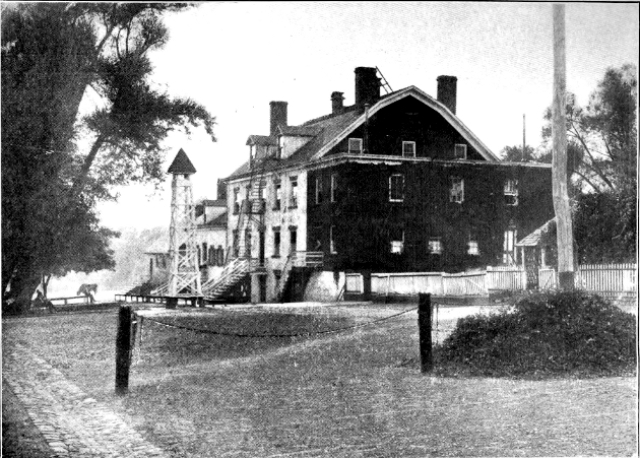
One of the many buildings at the old New York City Farm Colony between Walcott Avenue and Brielle Avenue in the Willowbrook section of Staten Island.
The concept for a farm colony for indigents took hold in 1829, when the Supervisors of Richmond County called a public meeting of the taxpayers to devise a method to provide for the poor. The proposal was to purchase a farm “large enough to enable the poor to earn their subsidence by their own labor.”
Soon thereafter, they purchased the farm of the late Stephen Martino (aka Martineau), a 96-acre farm with a farmhouse and several outbuildings in the heart of Staten Island, for about $3,000. They called the site the Richmond County Poor Farm.
The earliest known history of the Martineau farm goes back to April 24, 1676, when the land was laid out for Francois Martineau. Francois was a French refugee (possibly from St. Martin) who had previously lived in the Dutch farming village of Harlem.
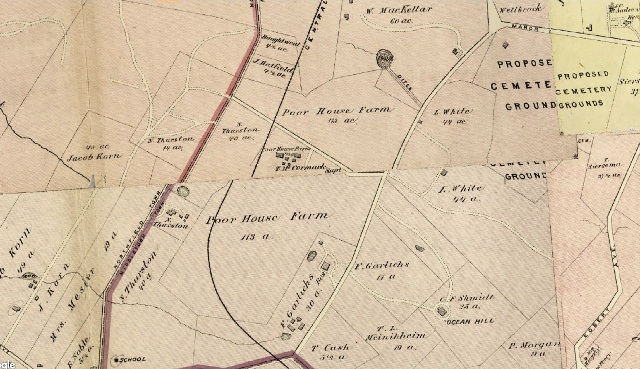 The Poor Farm is clearly labeled to the west of the old Manor Road (today’s Brielle Avenue) in the Town of Northfield on this 1874 atlas of Richmond County.
The Poor Farm is clearly labeled to the west of the old Manor Road (today’s Brielle Avenue) in the Town of Northfield on this 1874 atlas of Richmond County.
Stephen Martineau, the great great grandson of Francois, was born in 1761 on what was called the Old Dorp (Old Town) Farm near the northeastern shore of Staten Island. Stephen and his wife, Eleanor Haughwout, had 11 children. It was reportedly his daughter Maria who sold the farm in 1829.
In 1832, the Richmond County Poor Farm had 26 “paupers”–10 women and 16 men. The farm was renamed the Richmond County Farm Colony in 1893 and then the New York City Farm Colony in 1898 when Staten Island became a borough of the city.
By the 1900s, there were 824 residents and 150 employees in the colony. With 63 acres under cultivation, the food harvested exceeded their needs, allowing the farm colony to sell the excess to other institutions.
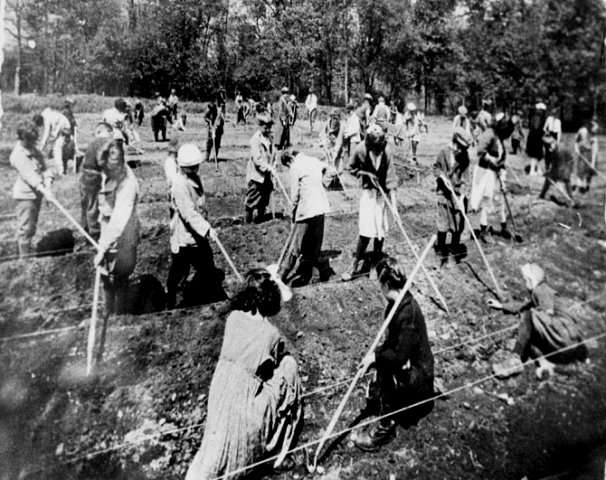 In 1924, the farm colony in Staten Island was transferred to the city’s Homes for Dependents agency, which lifted the work requirement for residents of the colony.
In 1924, the farm colony in Staten Island was transferred to the city’s Homes for Dependents agency, which lifted the work requirement for residents of the colony.
By the time Alice Austen arrived at the New York City Farm Colony, most of the nearly 2,000 residents were elderly or disabled. The facility was closed in 1975; 10 years later the area was designated a historic district. Today, all the buildings sit abandoned and in decay: Untapped Cities has some great photos as does The New York Times if you want to do some additional exploring.
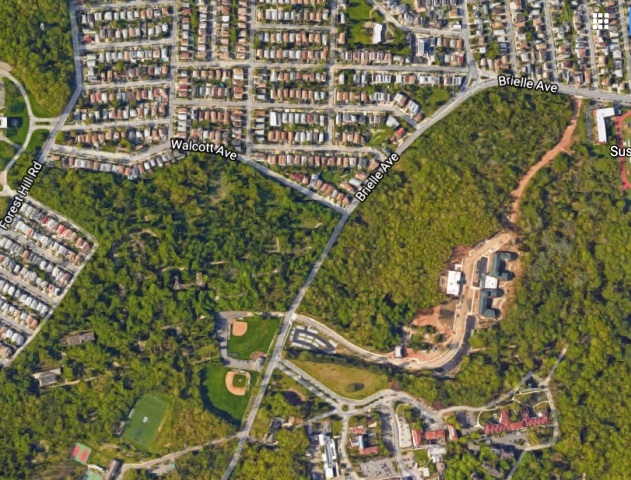
Here’s an aerial view of the vacant poor farm (to the left of Brielle Avenue) from Google Earth.
The Austen House: Clear Comfort
The Austen family house is located at 2 Hylan Boulevard in the Rosebank section of Staten Island, reportedly so named for the abundance of rose bushes and its location on the shore. Up until 1880 the region was part of Peterstown. The town was named by the German settlers who lived and farmed in the southern section (Irish settlers lived in the northern section).
No one is exactly sure what year the house was built. However, a nearby house, located just over the hills from the Austen house, was torn down in 1895, revealing a cornerstone dated 1644 (the Austens put the cornerstone on their porch). Another reports suggest it may have been built by a man named John Miller in 1669. But most reports state that the house was built around 1690.
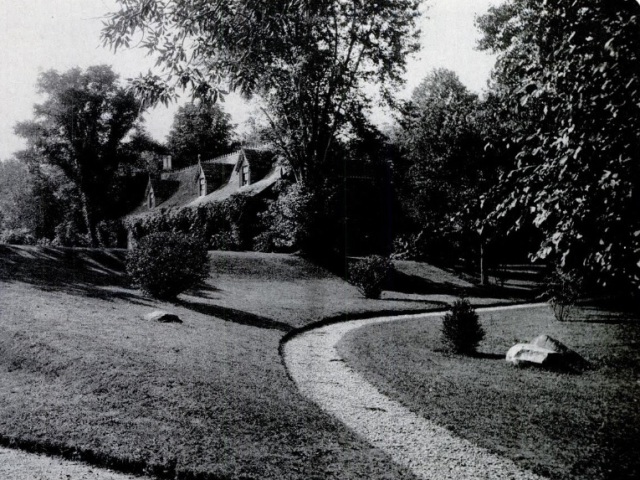 Originally a one-room Dutch Colonial cottage, the house was expanded and remodeled several times during the 1800s, especially after John Haggerty Austen, Alice’s grandfather, purchased and remodeled the home — which his wife called Clear Comfort — in 1844.
Originally a one-room Dutch Colonial cottage, the house was expanded and remodeled several times during the 1800s, especially after John Haggerty Austen, Alice’s grandfather, purchased and remodeled the home — which his wife called Clear Comfort — in 1844.
The house is on land that was patented to George Browne on April 22, 1691, by Colonial Governor Henry Sloughter. In 1701, the brothers Jacob and Lambert Johnson (Jansen) reportedly purchased the land from Browne. The description on the deed states that the 120-acre parcel consisted of oak trees and a water side.
In 1723, when the island was surveyed under a grant from Queen Anne of Great Britain, the property was reportedly owned by Jacob, Lambert and John Woulter (Woulterse, Houltersson?) and the house was occupied by Jacob. Perhaps this was the same Jacob Johnson and the family name was recorded incorrectly, or perhaps a lot of men were named Jacob and Lambert back then…
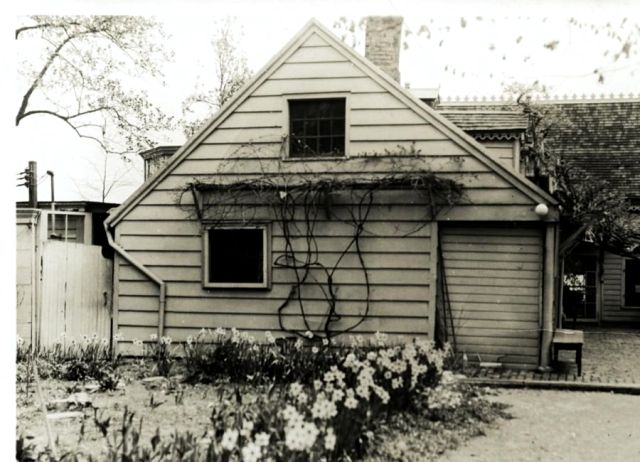 Alice Austen took this photograph of the rear of her house in 1933.
Alice Austen took this photograph of the rear of her house in 1933.
During the American Revolutionary War, Joseph Lake reportedly owned the house. During this time, George Washington was captured at the house by some of the men under the command of British Admiral Lord Richard Howe. It was here that Howe also met with Benjamin Franklin sometime during the Staten Island Peace Conference.
According to an article in the New York Sun in December 1, 1895, a British solider fell in love with a young maid who lived there while General Howe was plotting the capture of New York. She rejected him, and he hung himself from the rafters in the north room (dining room) of the house.
“And now,” the article said, “it is tradition’s tale, and not the story of the walls, the disembodied spirit of the red-coated warrior still visits the place of his folly, and clanks his spars and stamps his double-soled boots.” (The article also suggested that at one time there were pens in the cellar where slaves were kept.)
On November 10, 1895, The World told of a love story between Cornelius Vanderbilt, the old Commodore, and Miss Sally Lake, who was living at house in the early 1800s. Every day, Cornelius would row his ferry boat past the house and see Sally outside. One day she called for him to stop by, and soon thereafter the young teenagers fell in love.
The Lakes were a wealthy family, and Mrs. Lake did not approve of Sally’s infatuation with a “poor trash” boatman. Before he was ordered to never return, Cornelius was able to scratch “Sall Lake and C 1812” into a window using one of Sally’s diamond rings.
The Austen Family Moves In
In 1835, Daniel Low, a prominent Staten Island real estate developer, purchased the house and land for $10,000. The farm became part of an 828-acre tract called the Staten Island Association. Roads were then laid out and the property was subdivided and sold.
On October 10, 1844, John Haggerty Austen — a friend of Cornelius Vanderbilt — purchased the farmhouse and a half acre of land for $2,500 (he later acquired adjoining lots until he had about an acre of land overlooking the Narrows and the New York Harbor).
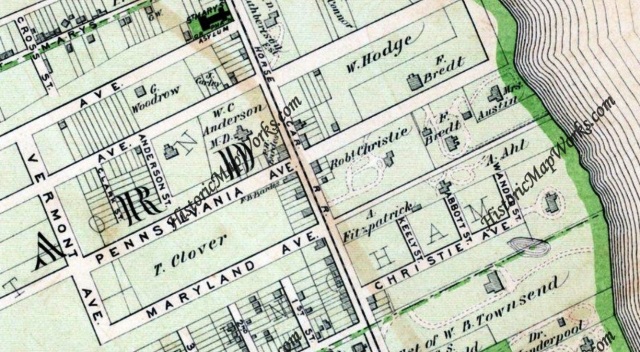
In 1874, the Austen house (spelled Austin here) was located on about one acre of land on Pennsylvania Avenue (the street was renamed Hylan Boulevard in 1923 in honor of New York City Mayor John F. Hylan). The McFarlane-Bredt house across the street was once home to the New York Yacht Club.
During the Austen years, from 1844 to 1944, the old house featured rafters hews from solid-oak logs and floors made of wood from from the cabins of broken-up ships that grounded along Staten Island’s shores.
There were also huge oak beams with panels of English deal reportedly taken from a British ship captured during the Revolution.

John Haggerty Austin, Aunt Minn Austen, Alice Austen, and Punch the pug.
In the parlor, the 10-foot-wide fireplace had Dutch tiles depicting Biblical scenes. Above the great fireplace was a link and a bolt from the great chain that stretched across the Hudson River at West Point in 1776.
The fireplace was also adorned with a brass knocker that hung on the door of Peter Townsend’s house in Chester, New York. (Townsend, the owner of the Sterling Iron Works, which made the great chain, was Alice Austen’s great great grandfather).
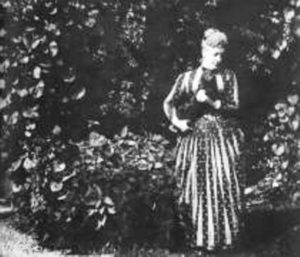
Alice Cornell Austen Munn with the family cat, Tristan (Alice gave this name to the black cat because she liked Richard Wagner’s opera, Tristan und Isolde. She took this photo on September 6, 1877.
Alice Austen’s Final Year
In 1950, while Alice was living at the farm colony, a small publishing company was invited to look through the contents of the dusty boxes that Alice’s friend, Loring McMillen, had stored away in the basement of the Richmond court house. The company published many of the photos in a book called the Revolt of American Women by Oliver Jensen.
Alice Austen’s share of the proceeds was enough money to get her out of the poor farm and into a private nursing home. She lived there for eight months until dying peacefully in her sleep on June 9, 1952.
Alice Austen was buried in the Austen family plot in the Moravian Cemetery (Alice and Gertrude Tate hoped to be buried together, but their families denied their wish.)
Today, the Alice Austen House is a popular museum that celebrates Alice’s life and photography. Every year in June, the museum hosts the Annual Pug Fun Day in honor of Punch the pug. (I think chihuahuas should be invited also, in honor of Chico.)
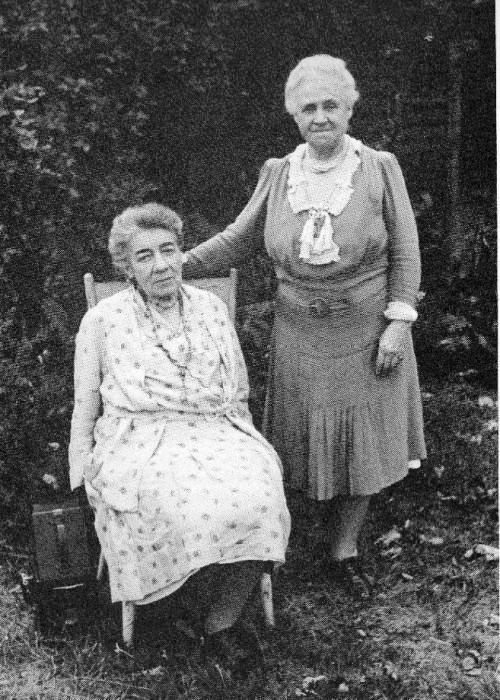
Alice Austin and Gertrude Tate in their later years.
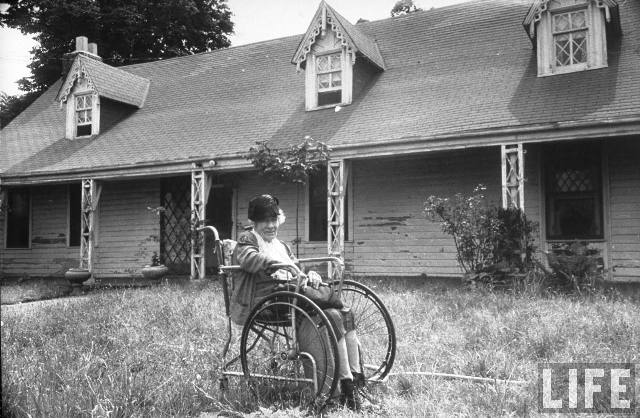
In 1951, Alice Austen had a chance to visit her old home. This photograph appeared in an article about her life in Life magazine.


